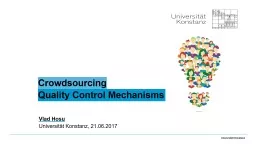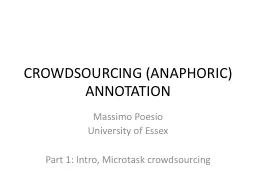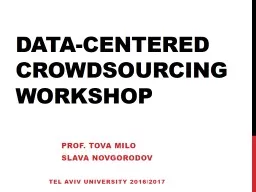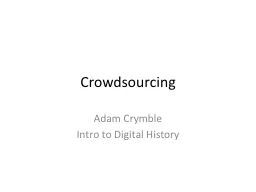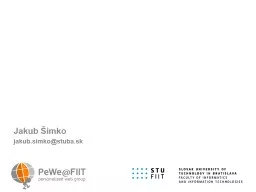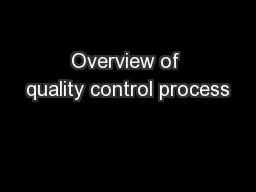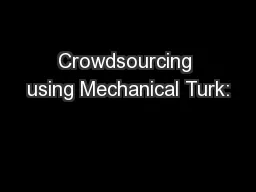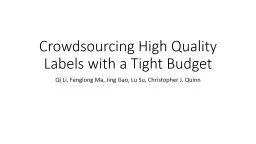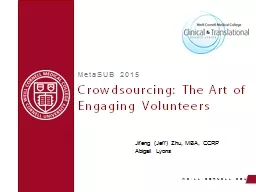PPT-Crowdsourcing Quality Control
Author : slayrboot | Published Date : 2020-08-05
Mechanisms Vlad Hosu Universität Konstanz 21062017 With thanks to Matthias Hirth from University of Würzburg Agenda Honesty in Online Labor Markets Exemplary
Presentation Embed Code
Download Presentation
Download Presentation The PPT/PDF document "Crowdsourcing Quality Control" is the property of its rightful owner. Permission is granted to download and print the materials on this website for personal, non-commercial use only, and to display it on your personal computer provided you do not modify the materials and that you retain all copyright notices contained in the materials. By downloading content from our website, you accept the terms of this agreement.
Crowdsourcing Quality Control: Transcript
Download Rules Of Document
"Crowdsourcing Quality Control"The content belongs to its owner. You may download and print it for personal use, without modification, and keep all copyright notices. By downloading, you agree to these terms.
Related Documents

